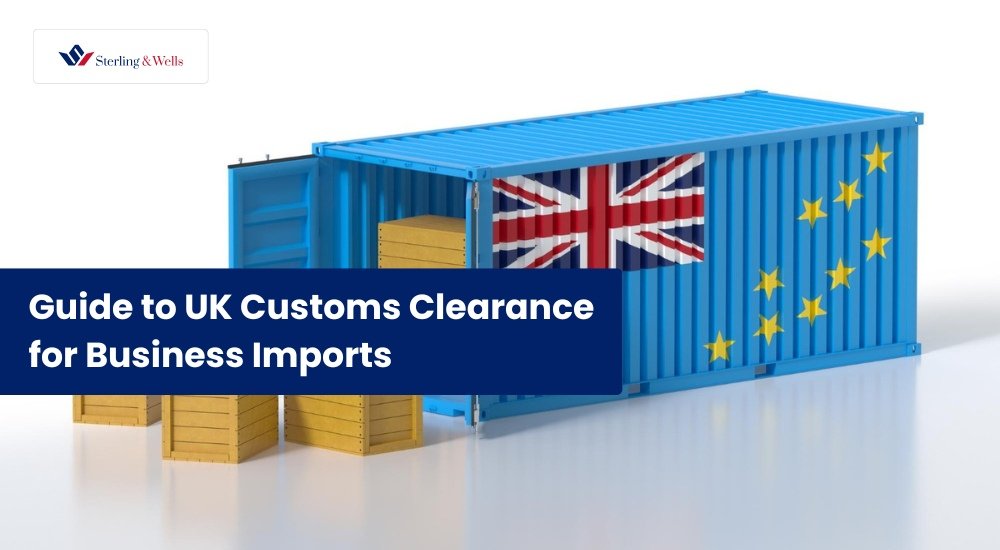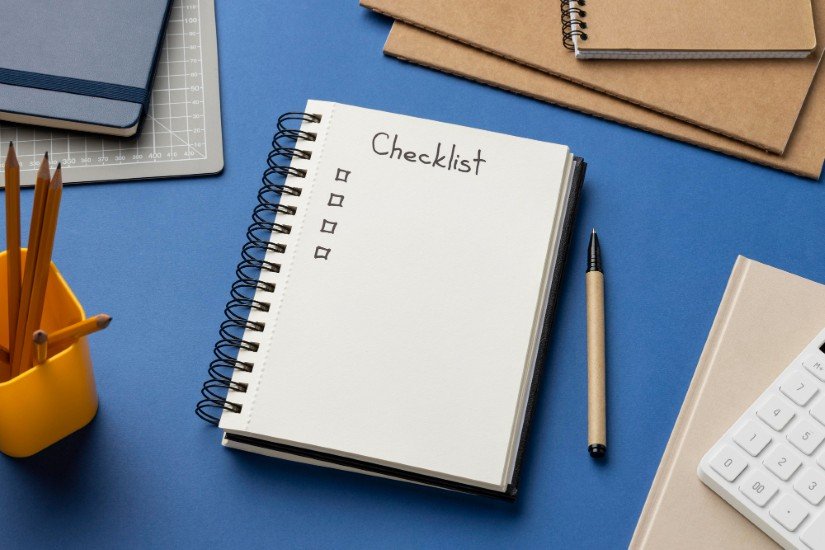Guide to UK Customs Clearance Process for Business Imports

When you bring commercial goods into the UK, you must follow the official customs process. This means preparing in advance, making a customs declaration, and paying any duties or VAT. The UK’s Customs Declaration Service (CDS) is the system used for import declarations.
This UK Customs Clearance Process guide walks you through each step in order, using simplified language for first-time importers.
Step 1: Get an EORI number and set up your business
Every business needs an Economic Operators Registration and Identification (EORI) number to make import declarations. If you import into England, Scotland or Wales (Great Britain), your EORI must start with “GB”. (If you move goods to or from Northern Ireland, you may need an EORI number that starts with “XI”.) You apply for an EORI number on the UK government website. Make sure your business is established in the UK (for example with a registered office or premises) so you can qualify for an EORI.
You should also set up any necessary customs accounts and software. Many importers use a duty deferment account, which lets you consolidate payments (you pay by direct debit once a month instead of per shipment). You will use HMRC’s online services or compatible customs software to submit declarations into CDS.
Step 2: Check licenses, registrations, and inspections
Not all goods import the same way. First, see if your goods are controlled or restricted. Certain products – such as plants and plant products, animals or animal products (food, hides, etc.), medicines (human or veterinary), chemicals, firearms, and textiles – need special licenses, certificates or registrations.
For example:
- Fresh produce, plants or plant products often need an official plant-health certificate.
- Live animals or animal products may need veterinary inspection and clearance.
- Chemicals and hazardous substances might require special import permits.
- Pharmaceuticals, medicines or medical supplies need MHRA approval or import authorisations.
- Weapons or guns cannot be imported without Home Office licences.
If your goods fall into any restricted category, register as an importer for those goods on GOV.UK and obtain the necessary licence or certificate before importing. Some high-risk foods and animal/plant products also must be inspected at a UK-approved border inspection facility before they can enter the UK. You would need to book an inspection point in advance (for example, at a port or airport) so that UK officials can check your shipment for safety or compliance.
Step 3: Choose who will make the customs declaration
You can handle the customs declaration yourself or hire a specialist. A customs agent or broker is a business that prepares and submits customs paperwork for you. UK law requires that any agent you use be established in the UK. Express delivery companies (couriers) can also clear shipments as part of their service.
Hiring an agent or carrier
Agencies like freight forwarders, customs brokers, or courier companies can manage the declaration process on your behalf. If you choose an agent, you must give them written instructions showing whether they act for you directly or indirectly and keep a copy for your records. Even if someone else submits the paperwork, your business remains responsible for making sure the information is correct.
Doing it yourself
If you have the EORI number and the right customs software, you can submit declarations directly using the government’s CDS portal. You will need to register your Government Gateway ID for CDS. You should prepare to provide all necessary data (like commodity codes, values, origin country, weights, etc.) and pay any duties. The GOV.UK pages “Check what systems and software you need” and “Get an EORI number” explain the technical steps.
Step 4 (Optional): Apply for special authorisations (to speed things up)
If you import frequently or large volumes, consider official authorisations to make the process smoother:
Simplified Declaration Procedures
Once authorised by HMRC, you can use simplified import declarations (also called the simplified frontier procedure). This lets you declare limited information when goods arrive and submit a full declaration later (often by the 10th day of the next month). To do this, you must apply in advance (using form C&E48) and meet HMRC criteria (good compliance history, IT systems linked to CDS, and a deferment account). Simplified procedures are useful for regular shippers because they speed up border clearance.
Entry in Declarant’s Records (EIDR)
Another scheme for approved traders. Similar to simplified, you enter goods into your own records and finalize the paperwork later.
Authorised Economic Operator (AEO) status
AEO is like an “approved business” certificate in customs. If granted, you get faster customs clearance and fewer checks. To qualify for AEO, your company must be established in the UK, active in trade, have a clean compliance record and an EORI number. Even new businesses can apply if they follow rules. AEO status can be very helpful for reducing delays and paperwork if your imports are regular and large.
Other schemes
There are schemes like Postponed VAT Accounting (see Step 5) and, for shipments via Common Transit, “consignee status” which lets you clear goods at your own premises. These require separate applications. Check HMRC guidance to see if they suit your situation.
You do not have to use these schemes to import, but if you qualify, they can save time and money. All of these authorisations are managed by HMRC and may involve an application, audit or security guarantees.
Step 5: Submit the import declaration
When your goods are about to reach the UK border (port, airport, or Eurotunnel), you must submit an import declaration through CDS. Whether you do this online yourself or via your customs agent, the declaration will include details like the commodity code (HS code), goods description, origin, invoice value, shipping details, and any license or certificate numbers you obtained.
The declaration is made in the Customs Declaration Service (CDS), the UK’s digital system for imports. Once you submit, HMRC processes it and calculates any duties and VAT due. (If you’re importing from the EU into Great Britain, there was a temporary scheme to delay declarations, but that ended in early 2024. Now all imports need a declaration by arrival time, though you can postpone VAT on your VAT return – see next step.)
If everything is in order on submission, HMRC will acknowledge your declaration. Be careful: errors in commodity codes or values can cause delays or penalties, so double-check. If you used a simplified procedure (with HMRC’s permission from Step 4), you may submit just a basic declaration at the border and provide the rest of the details later.
Step 6: Pay import VAT and duties
After the declaration is submitted, HMRC will determine the amount of Customs Duty and VAT owed on the goods. They will notify you via CDS. You then must pay these charges. How you pay depends on the accounts you set up:
Duty Deferment Account
As mentioned, this account lets you delay paying duty/VAT by up to 30 days and make one combined payment per month. Most UK importers use deferment accounts because it makes cash flow easier and speeds up clearance (customs do not need payment per shipment). You must apply for a deferment account if you don’t have one yet (the rate of deferment depends on your business and can require a bank guarantee).
Cash Accounting or Guarantee Accounts
You can also pay duties by cash transfer or guarantee. A guarantee account is typically used for temporary admissions or when duty amount is uncertain.
Postponed VAT Accounting
If your business is VAT-registered, you can use Postponed VAT Accounting. This means you declare the import VAT on your VAT Return instead of paying it at the border. It effectively lets you postpone payment of import VAT up to when you file your VAT return. You then get a credit on that return (often via the C79 certificate) to recover the VAT. This is a common default for UK importers post-Brexit.
In any case, make sure you have paid the correct amount before taking delivery. HMRC’s guidance says, “HMRC will tell you how much to pay after you submit the declaration”. Keep records of all payments and get an import VAT certificate (C79) if you didn’t use postponed accounting, so you can reclaim VAT.
Step 7: After the goods arrive – inspections and release
Once the ship, plane or truck carrying your goods reaches the UK, the clearance process begins:
Document checks
UK Border Force or the port/airport authority will check your declaration, licenses and safety certificates. They may use scanning or X-rays to verify contents.
Physical inspections
Some goods are always inspected (e.g. food, live animals) or if something looks irregular.
Customs release
If your paperwork is correct, duties are paid (or covered by deferment), and any required inspections are passed, customs will release the goods to you. At that point the items can continue on to your warehouse or next destination.
Goods held at border
If there’s a problem (for example, duty/VAT wasn’t paid, a licence is missing, or goods failed an inspection), your shipment may be held. In that case HMRC or border control will tell you why it’s held. You will need to fix the issue – for example, supply the missing licence, pay additional tax, or correct the paperwork – before the goods can clear. If the hold is complicated, you can contact HMRC’s National Clearance Hub for help.
Once resolved, customs will clear the goods and notify you (often via the declaration system). From there, your goods can enter free circulation in the UK and be delivered to you.
Practical Tips and Checklist

Keep good records
Save all import invoices, shipping documents, declarations, licences and certificates. HMRC requires you to keep customs records for several years (usually 6 years) in case of audits.
Use correct commodity codes
Goods are classified by six- or ten-digit codes that determine duty rates and any restrictions. HMRC provides a tariff search tool to find the right codes. Mistakes can lead to delays or fines.
Watch deadlines
If you use simplified declarations, remember you must file the supplementary declaration on time (normally by the 10th day of the following month).
Hire an expert if unsure
Customs rules are complex. A professional customs agent or broker can save time and prevent errors, especially for regulated products.
Check the latest rules
UK import rules can change (for example after Brexit or new trade deals). Always verify on GOV.UK that guidance (like controls or tariffs) is up to date before shipping.
By following these steps—getting an EORI, checking for licences, arranging declarations (or an agent), submitting through CDS, paying the right taxes, and managing goods release—you will clear your imports properly and legally under current UK customs rules.
Prasun
Prasun Shrestha, a Chartered Accountant, specialises in property accounting, taxation, and financial management for UK clients. He conducts detailed tax research at UK Property Accountants and encourages collaboration to deliver exceptional client outcomes.